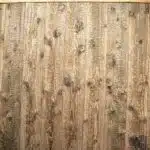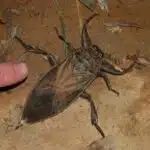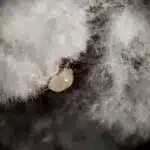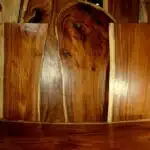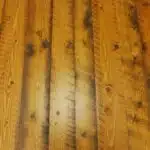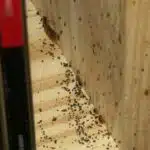Termites are one of the most destructive pests that can infest a home or building. They feed on wood and other cellulose materials, causing structural damage that can be costly to repair. If left untreated, a termite infestation can lead to serious damage and even make a building uninhabitable. As a pest control expert, it is important to know how to get rid of termites effectively and efficiently.
The first step in getting rid of termites is to identify the type of termite infesting the property. There are three main types of termites: subterranean, drywood, and dampwood. Each type requires different treatment methods, so it is crucial to determine which species is present before taking any action. Once identified, the next step is to implement a tailored treatment plan that targets the specific type of termite infestation. This may include baiting systems, liquid treatments, or fumigation depending on the severity and location of the infestation. With proper knowledge and execution of termite control measures, homeowners and property managers can effectively protect their buildings from costly termite damage.
Understanding The Dangers Of Termite Infestations
As pest control experts, we’ve seen it all when it comes to termite infestations. While termites may seem like harmless insects, the risks involved with an infestation can have severe consequences. One of the most significant dangers is property damage. Termites are known for their ability to chew through wood and other materials, causing structural damage that can be costly to repair.
The longer a termite infestation goes unnoticed, the more damage they can cause. In extreme cases, termites can even compromise the integrity of a building’s foundation. This poses a significant risk to anyone who lives or works in the affected area. It’s not just buildings at risk either; termites can also destroy furniture, books, and other items made from wood.
It’s essential to take termite infestations seriously and act quickly if you suspect one in your home or business. The potential risks involved are too high to ignore. Not only does timely action save you money on repairs in the long run, but it also ensures the safety of everyone on your property. In the next section, we’ll discuss how to identify what type of termite infestation you’re dealing with so that you can take appropriate action.
Identifying The Type Of Termite Infestation
Understanding the dangers of termite infestations is crucial in determining the appropriate treatment options. It is important to know that termites tend to cause severe structural damage, which can lead to costly repairs and replacements. Additionally, they are known to be silent destroyers as they work within walls and floors without being detected until it is too late.
Termite behavior patterns vary depending on the species involved, so identifying the type of termite infestation is critical. For instance, subterranean termites are known for creating mud tubes on walls while drywood termites create small holes in wood surfaces. Once identified, a professional pest control expert will determine the most effective treatment option based on the extent of damage and level of infestation.
There are various termite treatment options available such as liquid treatments, baiting systems, and fumigation. Liquid treatments involve applying a chemical barrier around the foundation of a home or building to prevent termites from entering. Baiting systems involve placing bait stations around a property to attract termites and eventually eliminate them. Fumigation involves tenting an entire structure to kill all termites inside. A professional pest control expert will discuss these options with clients and recommend the most suitable method for their specific situation.
Moving forward, identifying signs of termite infestations early is critical in preventing severe damage and saving money in repairs and replacements.
Signs Of Termite Infestations
Imagine waking up one day to find your home slowly deteriorating, with no apparent cause. The walls are hollow, your furniture is falling apart, and the foundation of your house seems to be giving in. These could all be signs of a termite infestation that has gone unnoticed for a long time. Termites are known as silent destroyers because they eat wood from the inside out, leaving no visible trails behind until it’s too late.
To prevent extensive termite damage, it’s crucial to detect early signs of an infestation. Here are some common termite habitats and what to look out for:
- Subterranean termites: These termites live underground and build mud tubes that connect their colonies to their food sources. Look for small holes or cracks in your foundation or near wooden structures.
- Drywood termites: These termites live in dry wood and do not need moisture or soil. Look for small piles of fecal pellets that resemble sawdust near wooden furniture or structures.
- Dampwood termites: These termites thrive in damp environments like basements or crawl spaces with excess moisture. Look out for soft spots or sagging floors in these areas.
DIY prevention techniques may work for small infestations, but it’s always best to consult a pest control expert for a more comprehensive solution. Early detection is key in preventing extensive damage caused by these pesky insects.
In order to effectively prevent termite infestations, it’s important to understand how they operate and what attracts them to certain areas. In the next section, we will discuss prevention techniques that can be implemented to keep your home safe from these silent destroyers.
Prevention Techniques For Termite Infestations
After identifying the signs of a termite infestation, it is time to take action. Prevention techniques are crucial in ensuring that your property is safe from these wood-destroying insects. One effective way of preventing termites is by using termite-resistant construction materials during building or renovation. These materials are treated with chemicals that repel termites and prevent them from entering your home.
Another prevention technique is through the use of natural remedies. Essential oils such as clove, neem, and tea tree oil have been found to be effective in repelling termites. Simply apply these oils on wooden surfaces, and you will create an unfavorable environment for termites. Additionally, planting certain plants such as mint, garlic, and marigold around your property can also help deter termites.
While prevention techniques can greatly reduce your risk of a termite infestation, sometimes it may be too late for prevention methods to work effectively. In such cases, contacting a pest control expert is necessary. Pest control experts have specialized knowledge and equipment to handle termite infestations effectively. They will inspect your property thoroughly and develop a customized treatment plan to eliminate any existing termite colonies and prevent future ones from forming.
In conclusion, taking preventative measures can save you time, money, and headaches in the long run by preventing termite infestations from occurring altogether. However, if you do find yourself dealing with a termite problem despite your best efforts at prevention, do not hesitate to contact a pest control expert for assistance. With their expertise and resources combined with your commitment to keeping your property free of pests, you can enjoy peace of mind knowing that your home is protected against these destructive insects.
Contacting A Pest Control Expert
If you suspect that your home is infested with termites, it is important to act quickly. Early intervention can prevent extensive damage and save you money in the long run. Contacting a pest control expert should be your top priority. These professionals have the knowledge, experience, and equipment necessary to identify the extent of the infestation and determine the best course of action.
While there are DIY termite control options available, these methods are often ineffective and may even make the problem worse. Termite baits and sprays can be dangerous if not used properly, and they may only kill a small percentage of the colony. In some cases, DIY treatments can drive termites deeper into your home or cause them to spread to other areas.
By contrast, a pest control expert will conduct a thorough inspection of your home to identify all areas of infestation. They will then develop a customized treatment plan based on your specific needs. This may include chemical treatments, physical barriers, or other methods depending on the severity of the infestation.
To ensure that your home remains termite-free, it is important to conduct regular inspections and maintenance. In the next section, we will discuss how to conduct a thorough inspection and identify potential entry points for termites. By taking proactive steps now, you can protect your biggest investment from costly damage down the road.
Conducting A Thorough Inspection
- A thorough inspection is necessary to properly identify termites and to determine the extent of the infestation.
- It is important to look for evidence of termites such as mud tubes, discarded wings, exit holes and soil mounds.
- During a visual inspection, all areas of the property should be checked for signs of damage, such as hollowed-out wood and damaged paintwork.
- It is also important to check for signs of termite activity, such as fecal pellets, signs of mud tubes and other damaged wood.
- To locate nests, it is necessary to look for termite activity in dark and damp areas, such as crawl spaces, attics and basements.
- Finally, it is important to check the exterior of the home for signs of termite activity, such as soil mounds and damaged wood.
Identifying Termites
Termites can be a homeowner’s worst nightmare. These silent destroyers can cause extensive damage to your home before you even realize they’re there. To properly get rid of termites, it’s crucial to first identify them. Termite damage can sometimes be mistaken for water damage or just regular wear and tear, so it’s important to know what to look for.
One way to identify termites is by their behavior. Termites are known for building mud tubes that allow them to travel between their nest and food source without being exposed to the open air. Look around the foundation of your home for these narrow mud tubes as they are one of the most obvious signs of termite activity. Additionally, termites shed their wings after they mate and start a new colony. If you find discarded wings around your home, it could indicate that termites are present.
Another sign of termite activity is termite damage. This can include hollow-sounding wood or wood that appears swollen or distorted. Termites eat from the inside out, so if you tap on a piece of wood and it sounds hollow, it may be infested with termites. Additionally, if you notice any small holes in drywall or wallpaper, this could also indicate the presence of termites.
In conclusion, identifying termites is crucial in getting rid of them effectively. By understanding termite behavior and recognizing signs of termite damage, homeowners can take action before significant damage occurs. Don’t wait until it’s too late – conduct a thorough inspection of your home today!
Checking For Damage
As a pest control expert, conducting a thorough inspection is crucial in identifying termite activity and preventing further damage to your home. One aspect of this inspection is performing a termite damage assessment. This involves checking for signs of termite activity that may not be immediately visible to the untrained eye. It’s important to note that while termites can cause extensive damage quickly, they do so gradually over time. Therefore, regular inspections are necessary to catch any potential issues early on.
Checking for damage is one way to identify signs of termite activity during an inspection. As mentioned earlier, termites eat from the inside out, so hollow-sounding wood or wood that appears swollen or distorted could indicate the presence of termites. Additionally, if you notice any cracks or bubbling paint on walls, this could also signify termite damage. Other areas to inspect include baseboards, door frames, and window sills.
During an inspection, it’s essential to focus on both the interior and exterior of your home. Outside your home, look for mud tubes around your foundation or any visible cracks in your concrete slab. Inside your home, check for small holes in drywall or wallpaper as well as any signs of moisture buildup or leaks. By conducting a thorough inspection and checking for damage both inside and outside your home, you can identify signs of termite activity early on and take action before significant damage occurs.
In summary, performing a thorough inspection is essential in identifying signs of termite activity and preventing further damage to your home. Checking for damage during an inspection can help uncover potential issues that may not be immediately visible. By focusing on both the interior and exterior of your home during an inspection, homeowners can take action before significant damage occurs.
Locating Nests
As a pest control expert, conducting a thorough inspection is critical in identifying termite activity and preventing further damage to your home. Aside from checking for damage, locating termite nests is also crucial in the inspection process. Identifying the location of termite nests can help determine the extent of the infestation and develop an effective treatment plan.
There are various methods and tools used to locate termite nests, including acoustic emissions detectors, moisture meters, and infrared cameras. These tools measure sound or temperature changes that termites create when feeding or moving around their colonies. Additionally, observing termite behavior can help identify potential nesting sites. Termites often build nests near sources of moisture or food, such as rotting wood or damp soil.
Termite nest identification relies on both behavior and appearance. Nests can appear as mud tubes built along exterior walls or in crawl spaces underneath your home. Inside your home, nests may be located in areas with high moisture levels like bathrooms or attics. It’s important to note that locating termite nests requires expertise and experience to avoid causing further damage to your home. Therefore, it’s best to consult with a professional pest control expert for a proper inspection and treatment plan.
Baiting Systems For Termite Control
Having conducted a thorough inspection of your property, you may have discovered that termites are present. It is important to take action quickly to avoid further damage and potential safety hazards. One effective method for termite control is the use of baiting systems.
Baiting systems work by placing bait stations around your property that contain a slow-acting toxic substance. The termites will consume the bait and carry it back to their colony, where it will be shared with other termites, ultimately leading to their demise. One of the benefits of using baiting systems is that they are environmentally friendly and do not pose a risk to humans or pets.
There are DIY baiting techniques available, but it is recommended to consult with a pest control professional before attempting any treatment on your own. A professional can ensure that the correct type of bait is used and placed in the most effective areas around your property. In addition, they can monitor and maintain the bait stations over time to ensure continued effectiveness in termite control.
Moving forward, if a baiting system does not seem like the best option for your specific situation, there are liquid treatments available as well. These treatments involve applying liquid termiticide directly into the soil around your property or injecting it into areas where termites have been detected. The goal is to create a barrier between your home and the termite colony, preventing further infestation. In our next section, we will explore these liquid treatments in more detail and discuss their effectiveness in termite control.
Liquid Treatments For Termite Control
Using liquid treatments is an effective way to get rid of termites in your home. These treatments work by applying a solution to the soil around the foundation of your home, creating a barrier that repels termites. This method is like building a moat around a castle to keep out invaders.
Before deciding on a liquid treatment, it’s important to understand the different options available and their effectiveness. Here are some key points to consider:
- Liquid treatments can be applied as DIY options or through professional applications.
- Some of the most popular chemicals used in liquid treatments include imidacloprid, fipronil, and chlorantraniliprole.
- Soil type and weather conditions can affect the effectiveness of liquid treatments.
- Liquid treatments may need to be reapplied periodically to maintain their effectiveness.
As a pest control expert, I recommend considering liquid treatments as one option for termite control. If you’re comfortable with DIY solutions, there are products available at hardware stores that can be used effectively with proper application. However, if you want more assurance and expertise, professional applications may be worth considering. No matter which route you take, it’s important to weigh the pros and cons of each option before making a decision.
In order to further protect your home from termites, it’s also important to consider fumigation for termite control. This method involves tenting your home and filling it with gas that kills termites throughout the structure.
Fumigation For Termite Control
- Fumigation for termite control requires proper preparation to ensure a successful outcome.
- Preparation involves identifying and sealing off all potential sources of entry, as well as properly covering and protecting any items that may be affected.
- The fumigation process consists of the introduction of specific gases into a sealed area that will eventually penetrate the wood and other materials to kill the termites.
- The fumigation process must be done by a pest control expert and monitored throughout the entire process.
- During fumigation, safety must be taken into account when dealing with the hazardous gases used and ensuring that all occupants are cleared out of the space being fumigated.
- After the fumigation process is complete, the area must be properly ventilated to ensure that any remaining gases have been removed before re-entry.
Fumigation Preparation
As a pest control expert, it is crucial to understand that fumigation for termite control requires adequate preparation to ensure safety and effectiveness. Before commencing the process, one should ensure that all food, pets, and plants are removed from the house or adequately covered. In addition, all windows and doors should be sealed tightly to prevent any leaks of the fumigant.
Selecting a reliable fumigation company is also critical in ensuring optimal results. It is essential to research potential companies thoroughly before making a final decision. A reputable company should have trained technicians and use appropriate equipment for safe and effective fumigation. Asking for references from satisfied customers can also provide valuable insight into their level of professionalism.
In conclusion, proper preparation for fumigation is vital in ensuring safety and effectiveness when controlling termites. Selecting a reliable fumigation company with experienced technicians is also crucial in achieving desirable results. By following these guidelines, homeowners can effectively get rid of termites and prevent further infestations.
Fumigation Process
As a pest control expert, it is crucial to understand the fumigation process when dealing with termite infestations. The fumigation process involves using specialized equipment to release a lethal gas into the infested area, effectively eliminating all termites. However, this process requires strict safety precautions to ensure that the homeowners and surrounding areas are not exposed to the toxic fumes.
Before commencing fumigation, it is essential to inform nearby neighbors of the impending treatment and advise them on any necessary precautions they should take. All occupants must evacuate the premises, including pets and plants, before releasing the fumigant. Additionally, one should cover all food and water sources in sealed bags or remove them from the house entirely.
Cost considerations are also critical when planning for termite fumigation. Factors such as the size of the infestation, property size, type of fumigant used, and accessibility to affected areas can influence pricing. It is essential to obtain quotes from several reliable companies while considering their level of professionalism and experience in handling similar cases. Overall, proper preparation and adherence to safety precautions during termite fumigation can effectively eliminate these pests from homes while protecting occupants’ health and wellbeing.
Fumigation Safety
Safe fumigation methods are crucial when dealing with termite infestations. Fumigating a home requires the use of specialized equipment to release lethal gases into the infested area, making it necessary to take strict safety precautions to ensure the safety of occupants and surrounding areas. One of the essential safety precautions is to inform nearby neighbors of the impending treatment and advise them on any necessary precautions they should take.
Another critical consideration for safe fumigation is ensuring that all occupants have evacuated the premises before releasing the fumigant. This includes pets and plants, which can be particularly sensitive to chemical exposure. Additionally, one should cover all food and water sources in sealed bags or remove them from the house entirely. Safe fumigation also involves proper maintenance of equipment, such as checking for leaks or any other damage that could cause gas leakage.
Overall, safe fumigation requires strict adherence to safety protocols during termite control treatments. Pest control experts must understand these safety measures to protect themselves and their clients from potential harm. Proper preparation, equipment maintenance, and adherence to safety precautions during termite fumigation can effectively eliminate these pests from homes while protecting occupants’ health and wellbeing.
Heat Treatments For Termite Control
One of the most effective ways to get rid of termites is through heat treatments. This method involves exposing the infested area to high temperature levels, which can kill off the termites and their eggs. One of the main benefits of heat treatments is that they are non-toxic and do not require the use of harmful chemicals. This makes them a safe option for both homeowners and pest control professionals.
However, there are also some cons to consider with heat treatments. First, they can be costly compared to other methods of termite control. Additionally, heat treatments may not be effective in treating all types of termite infestations, as they may not reach every nook and cranny where termites might hide. As such, it’s important to assess whether heat treatments are an appropriate solution for your specific situation.
If you’re looking for alternative methods for termite control, there are several options available. These include chemical treatments, baiting systems, and physical barriers such as mesh screens or sand barriers around your home’s foundation. Each method has its own pros and cons, so it’s important to consult with a pest control professional to determine which one is best suited for your needs.
Transition: While heat treatments can effectively eliminate current termite infestations, preventing future infestations requires a different approach. In our next section, we’ll explore some preventative measures you can take to keep termites at bay.
Preventing Future Termite Infestations
When it comes to termites, prevention is key. Effective barriers are crucial in keeping termites out of your home. Barriers can be physical or chemical, and both have their advantages and disadvantages. Physical barriers include stainless steel mesh, sand, and crushed rock, while chemical barriers include termite baits and liquid termiticides.
Another effective way to prevent future termite infestations is by using termite resistant materials during construction or renovation. These materials are designed to resist termite damage and are often made from treated wood or composite materials. While these materials may cost more initially, they can save you money in the long run by preventing costly repairs caused by termite damage.
In addition to physical barriers and termite resistant materials, there are other steps you can take to prevent future termite infestations:
- Keep moisture away from the foundation of your home.
- Store firewood away from your home.
- Ensure proper ventilation in crawl spaces.
- Do not leave piles of debris near your home.
By incorporating these preventative measures into your pest control plan, you can greatly reduce the risk of future termite infestations in your home.
As a responsible homeowner, maintaining a regular termite inspection schedule is important for continued protection against these destructive pests. By working with a professional pest control company, you can ensure that any potential issues are caught early and addressed before they become major problems.
Maintaining A Regular Termite Inspection Schedule
Moving forward, it’s important to take preventative measures to ensure that termites never return. Scheduling reminders for regular termite inspections is paramount in the fight against these pesky critters. By having a professional inspect your home on a regular basis, you can rest assured that any potential infestations will be caught early and dealt with accordingly.
Professional inspections should be conducted at least once a year. However, if you live in an area where termite activity is high or have experienced an infestation in the past, it may be wise to schedule more frequent inspections. A trained pest control expert will thoroughly examine your property for any signs of termites, including mud tubes, wood damage, and discarded wings.
Regular termite inspections are just one aspect of maintaining a comprehensive termite prevention plan. In addition to scheduling professional inspections, it’s important to monitor the effectiveness of any termite control measures that have been put into place. This includes keeping an eye out for signs of new infestations and making sure that any treatments or barriers remain intact. With proper maintenance and vigilance, you can keep termites at bay and protect your home from costly damage.
Transitioning into the subsequent section about monitoring the effectiveness of termite control measures: Now that we’ve discussed the importance of scheduling professional inspections and conducting regular maintenance checks, let’s explore how to effectively monitor the success of your termite prevention plan over time.
Monitoring The Effectiveness Of Termite Control Measures
Measuring the effectiveness of termite control measures is crucial to ensure that the efforts put in place are working as expected. There are different methods used to assess the impact of various termite control measures, including monitoring stations, visual inspections, and chemical applications. It is essential to choose a method that can accurately measure the effectiveness of the approach used.
One way to improve monitoring techniques is by using remote sensing technologies such as infrared imaging and acoustic sensors. These methods can detect termite activity by identifying changes in temperature or sound waves caused by their movements. This approach enhances early detection and treatment, which reduces the cost and time required for remediation. Additionally, remote sensing technologies provide non-invasive ways to monitor termites without disturbing their habitats.
Another technique for measuring effectiveness is comparing pre- and post-treatment data. This involves collecting data before implementing a control measure and after its application. The comparison helps determine whether the method was successful in reducing termite infestation levels or not. Pre- and post-treatment data can be collected using different approaches such as visual inspections, baiting systems, or soil sampling.
To sum up, measuring effectiveness is an essential aspect of termite control practices. It ensures that the chosen method works as intended and provides value for money spent on it. Improving monitoring techniques through technological advancements such as remote sensing technologies or comparing pre- and post-treatment data can enhance accuracy in detecting termite activities while reducing costs associated with remediation efforts.
Moving forward into educating property owners and tenants about termite prevention, it is crucial to raise awareness of preventative measures that people can take to reduce the likelihood of a termite infestation occurring on their property.
Educating Property Owners And Tenants About Termite Prevention
Effective termite control measures require a comprehensive approach that involves monitoring and education. While it may seem daunting, getting rid of termites is essential to prevent damage to property and ensure the safety of occupants. In this section, we will discuss DIY termite prevention techniques that can help property owners and tenants protect their homes.
To effectively prevent termite infestation, it is important to understand termite behavior. Termites are attracted to moisture and warmth, making damp areas such as basements and crawl spaces prime spots for infestations. Additionally, termites feed on wood and other cellulose-based materials, which can cause significant damage if left unchecked. By identifying these factors in your home or property, you can take proactive steps to prevent infestation.
There are several DIY techniques that can be used for termite prevention. These include sealing cracks and gaps in foundations or walls, removing wood debris from around the property, using treated lumber for construction purposes, and ensuring proper ventilation in crawl spaces. By taking these steps, you can greatly reduce the risk of termite infestation and protect your property from costly damage.
Collaborating with local pest control experts is essential for effective results when it comes to preventing termites. These professionals have the experience and expertise necessary to identify potential problem areas on your property and implement appropriate solutions. By working together with pest control experts, you can ensure that your home or business stays safe from termites and other pests over the long term.
Collaborating With Local Pest Control Experts For Effective Results
Collaborating with local pest control experts is highly recommended when it comes to getting rid of termites. Professional termite control services offer numerous benefits that are often not possible with DIY solutions. Working with a local pest control company allows homeowners to access their wealth of knowledge and experience in dealing with different types of termite infestations.
Firstly, professional termite control service providers use specialized equipment and techniques that are not readily available to homeowners. They have access to potent chemicals and advanced tools that can effectively eliminate termites without posing a threat to the environment or human health. Additionally, they have a deep understanding of the behavior and biology of termites, which helps them identify the root cause of the infestation and provide customized solutions.
Secondly, collaborating with local pest control experts saves homeowners time and money in the long run. Attempting DIY termite extermination may seem like a cost-saving measure initially but can lead to more significant expenses later on if the infestation persists or worsens. Pest control professionals offer comprehensive treatment plans that address current infestations while also preventing future occurrences.
Lastly, working with professionals ensures peace of mind for homeowners. Termite infestations can be stressful and overwhelming, causing anxiety for homeowners who fear for their property’s safety. Collaborating with local pest control experts provides reassurance that the problem will be resolved promptly and efficiently.
- Conduct research on reputable pest control companies in your area before settling on one.
- Request quotes from multiple providers to compare pricing and service offerings.
- Ensure that the company you choose has proper licensing and certification from relevant authorities.
- Follow all instructions provided by the pest control expert during and after treatment.
Collaborating with local pest control experts offers numerous benefits in ensuring effective termite elimination while saving time, money, and providing peace of mind for homeowners. Thus, it is vital for anyone experiencing termite infestations to seek professional help as soon as possible.
Conclusion
Termites are a serious threat to the structural integrity of buildings and properties. Therefore, it is essential to understand the dangers of termite infestations and identify the type of termite species that may be causing damage. Signs of termite infestations include discarded wings, mud tubes, and hollow-sounding wood. To prevent termite infestations, property owners should ensure proper ventilation and drainage, remove moisture sources, and seal entry points.
Collaborating with local pest control experts can help eliminate termites effectively. Regular inspections and monitoring the effectiveness of control measures are crucial in maintaining a termite-free environment. Educating property owners and tenants about termite prevention can also aid in reducing future infestations. As the adage goes, “prevention is better than cure.” In this case, it is necessary to take preventative measures before an infestation occurs rather than trying to fix it after significant damage has been done.
In conclusion, understanding the dangers associated with termites is critical in preventing their destruction on properties. Identifying different types of termite species can enable homeowners to take appropriate measures to eradicate them. Regular inspections by pest control experts can aid in identifying early signs of infestation for effective treatment. Educating property owners and tenants about prevention techniques will help reduce future infestations. Remember: “An ounce of prevention is worth a pound of cure” when it comes to dealing with termites.
Image Credits
- “Winged termite” by Graham Winterflood (featured)


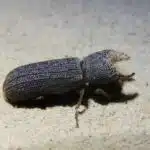


![How To Repair Rotted Wood 5 Texture : Altario Buick Estate Wagon : Rotting Faux Wood Paneling [1 of 2]](https://green-life.blog/wp-content/uploads/2023/05/z1CersK-gCjq-150x150.jpg.webp)
